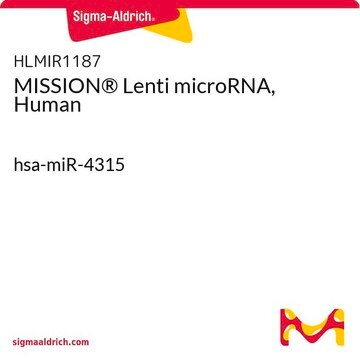579002
(Z)-4-Hydroxytamoxifen
≥99% (HPLC), solid, estrogen receptor modulator, Calbiochem
Synonym(s):
Tamoxifen, 4-Hydroxy-, (Z)-, (Z)-4-Hydroxytamoxifen, 4-OH-TAM, Estrogen Receptor Signaling Regulator II
Select a Size
$195.00
In Stock
Select a Size
About This Item
$195.00
In Stock
Recommended Products
Product Name
Tamoxifen, 4-Hydroxy-, (Z)-, A cell-permeable, active metabolite of Tamoxifen that acts as a potent inhibitor of PKC. It is more potent than the parent compound and inhibits PKC by modifying its catalytic domain.
Quality Level
assay
≥99% (HPLC)
form
solid
manufacturer/tradename
Calbiochem®
storage condition
OK to freeze
color
white
solubility
methanol: 10 mg/mL
ethanol: 20 mg/mL (heating may be required)
shipped in
ambient
storage temp.
2-8°C
General description
Biochem/physiol Actions
PKC
Warning
Reconstitution
Other Notes
Ye, Q. and Bodell, W.J. 1996. Carcinogenesis 17, 1747.
Laser, R., et al. 1985. Eur. J. Cancer Clin. Oncol. 21, 985.
Jordan, V.C., et al. 1978. J. Toxicol. Environ. Health 4, 364.
Legal Information
signalword
Danger
hcodes
Hazard Classifications
Acute Tox. 4 Oral - Aquatic Acute 1 - Aquatic Chronic 1 - Carc. 1B - Repr. 1B
Storage Class
6.1C - Combustible acute toxic Cat.3 / toxic compounds or compounds which causing chronic effects
wgk_germany
WGK 3
flash_point_f
Not applicable
flash_point_c
Not applicable
Certificates of Analysis (COA)
Search for Certificates of Analysis (COA) by entering the products Lot/Batch Number. Lot and Batch Numbers can be found on a product’s label following the words ‘Lot’ or ‘Batch’.
Already Own This Product?
Find documentation for the products that you have recently purchased in the Document Library.
Customers Also Viewed
Our team of scientists has experience in all areas of research including Life Science, Material Science, Chemical Synthesis, Chromatography, Analytical and many others.
Contact Technical Service












